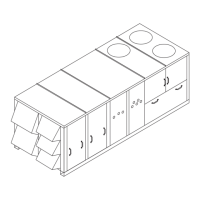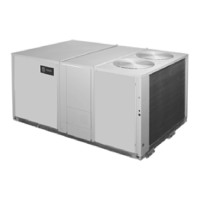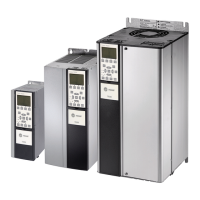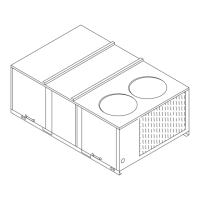SSAAFFEETTYY WWAARRNNIINNGG
Only qualified personnel should install and service the equipment. The installation, starting up, and servicing of heating, ventilating, and air-conditioning
equipment can be hazardous and requires specific knowledge and training. Improperly installed, adjusted or altered equipment by an unqualified person
could result in death or serious injury. When working on the equipment, observe all precautions in the literature and on the tags, stickers, and labels that
are attached to the equipment.
September 2020
RRTT--SSVVXX3344RR--EENN
Installation, Operation, and Maintenance
Voyager™™ Commercial
Packaged Rooftop Air Conditioners with
ReliaTel™ Controls and eStage™
27.5 to 50 Tons - 60 Hz
22.9 to 41.7 Tons (81-148 kW) - 50 Hz
“B” and later design
sequence
6600HHzz//33 pphhaassee: TC*, TE*,
YC*330B, 360B, 420B, 480B,
600B (60 Hz/3 phase)
5500 HHzz//33 pphhaassee: TC*, TE*,
YC*275B, 305B, 350B, 400B,
500B







